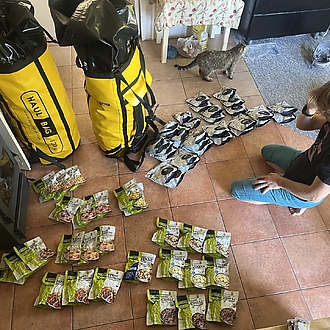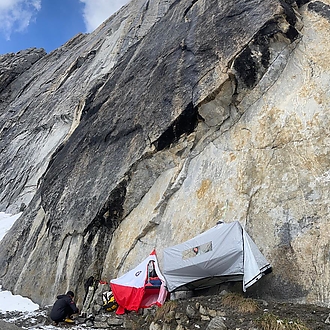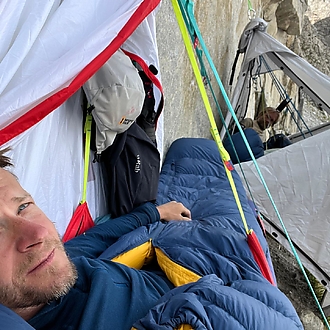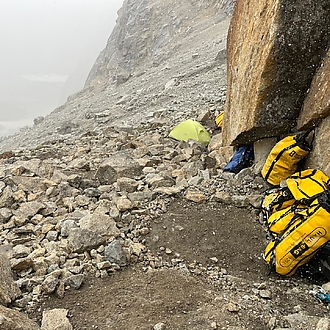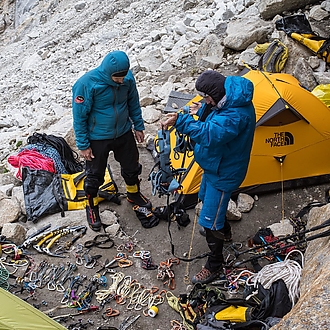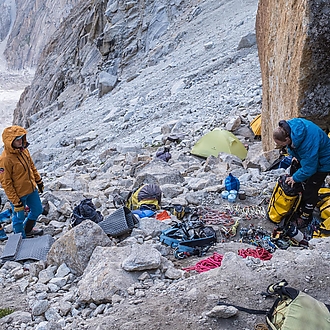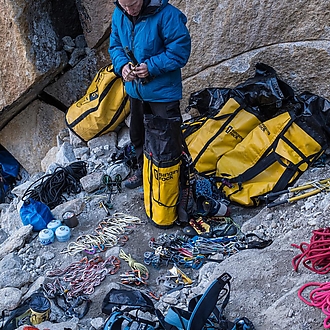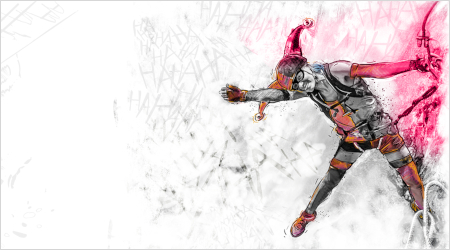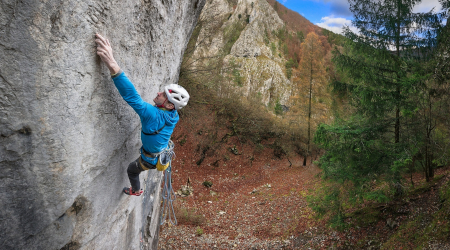What to pack for your first big wall?
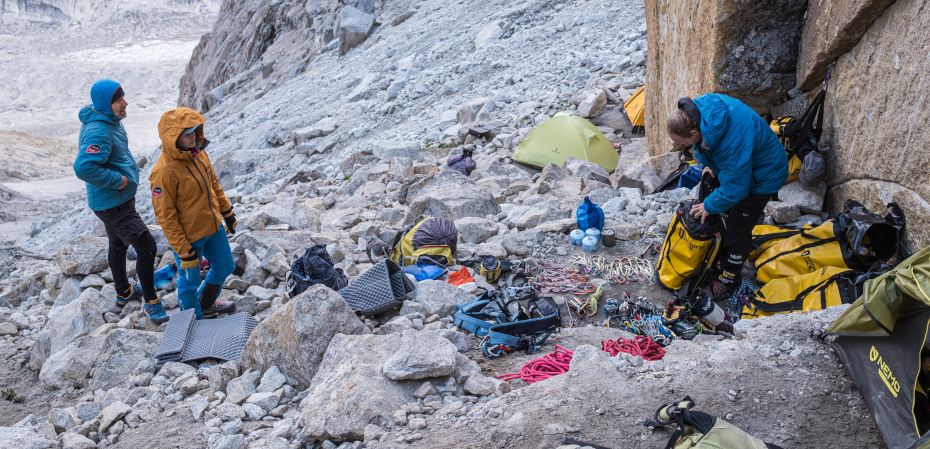
First of all, it should be mentioned that the term big wall is a very broad category, so a complete list of possible variants and methods cannot be expected even in this article. This term can include (for some) short multipitches in climbing areas like Hohewand or Höllental in Austria, multipitches for several days in rock walls, iconic big walls in Yosemite, multipitches in medium mountains, big walls in high mountains, etc. etc. Plus the styles of climbing are also different: free vs. technical climbing, OS or AF vs. RP/PP. This also has to do with the way of protection in a given wall, which significantly affects the amount of material and therefore the logistics. Simply put, two different climbing pairs can climb the same route completely differently and de facto as if they were climbing a different route. So take this article as a basic intro to the subject. As with everything, we will go methodically step by step or, if you want, hold by hold...
Level 1 – Multipitch rock climbing
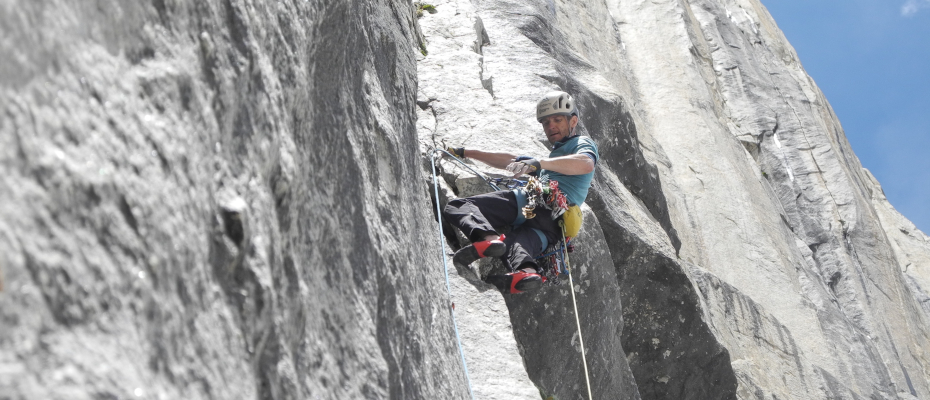
It is actually a couple of sport routes above each other with the only difference that at the beginning of the length we are not standing on the ground, but hanging at a belay station. So here we will need these extras compared to single-pitch sport routes:
- Helmet – always good on multipitches. It increases safety by eliminating head trauma - whether it's from a fall accompanied by a crash into the wall or from a loose stone impact. Yes, there may be overhanging routes where the climber falls into the air, but as you know, even that doesn't guarantee that they won't still hit the wall. And yes, there are routes in very compact, unbreakable rock, but there is still that possibility of hitting the head on the wall. So you can't 100% eliminate either of the above threats. And as even Pit Schubert writes (and if he didn't, let's not spoil the story with the truth...), if a situation is likely to happen, it will happen. I also prefer to climb without a helmet, after all free climbing is ideally as free as possible for me, i.e. without anything extra. I do take it for multipitches though, as nowadays on the market there are helmets so light that you hardly feel them on your head, and they weigh so little that if you don't neglect the toilet in the morning before starting the route, the weight of the helmet will be compensated or even overcompensated...
- Sit harness – you can have a classic sports one. On some routes there are comfortable belay stations of the "I stand on the ledge" type, where the design of the harness does not play such a role. But there are routes where you are hanging at the belay stations, and there a more comfortable sit harness is an advantage or even a necessity. There you will feel whether the harness distributes your weight well across the width of its waist belt and leg loops or not.
- Climbing shoes – depending on the length of the whole route, there is a direct proportion: the longer the route, the bigger the size of the climbing shoes. It also depends on the difficulty of the line. Close to my limit, I logically need similar ones as for sport climbing, but this can be solved by taking them off at each belay. I've been using rubber bands for years, which I tie onto the climbing shoes, and the loops around my ankles ensure that they don't fall down. This gives a rest to my toes and also to my head, which doesn't have to watch the removed shoes.
- Magnesium carbonate – of course, it depends on the air temperature, the sweatiness of your hands and the psychological need to calm down in the chalk bag... I have found it useful to use a refillable ball. With the ball you use less magnesium and most importantly it doesn't spill out when a gust of wind turns the chalk bag upside down.
Level 2 – Multipitches for several days
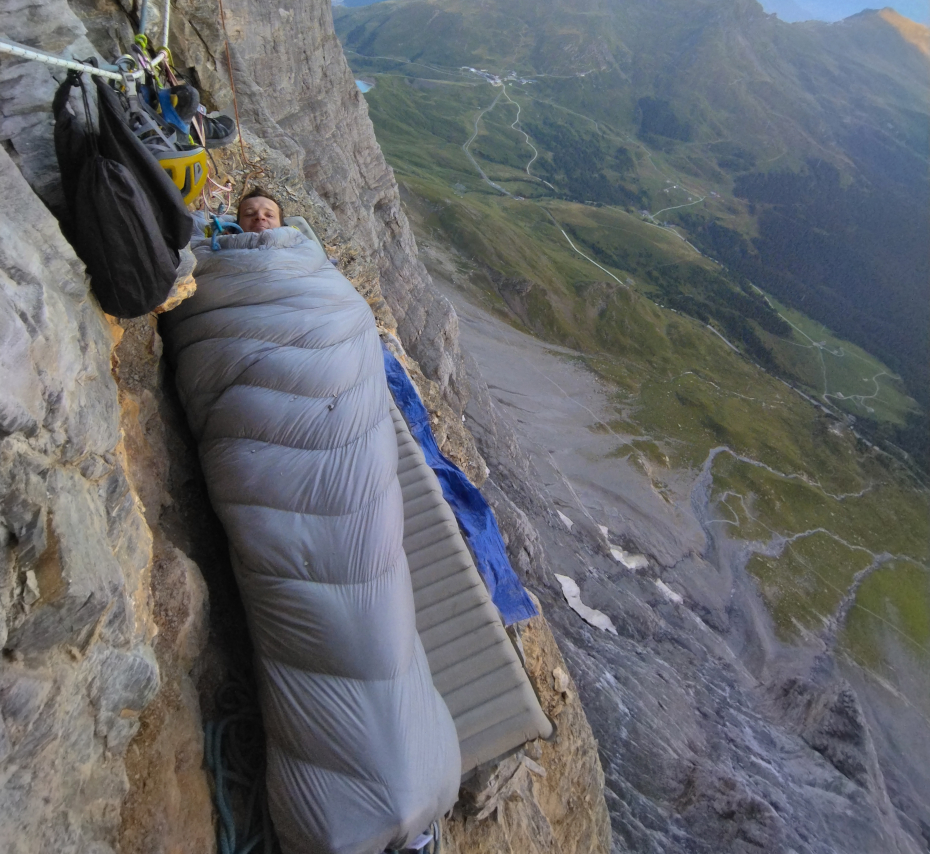
It's basically a multiplication of the level 1, but between each multi-pitch climbing day I don't sleep at home, or on the ground, but in the wall.
- Sleeping in the wall is an issue for a separate article, but in the end it's like with belay stations. There are routes where you can sleep on ledges, although anything can be imagined by the term ledge, and then there are hanging anchors where the only option is a portaledge, i.e. a hanging bed. Today we have a choice of beds not only with a rigid tubular construction, but now also with an inflatable construction.
- Whether or not we take a portaledge for a multiday multipitch, the hard work is unavoidable. The whole wall we will be hauling a sleeping bag, sleeping pad, stove, gas cartridge, mess kit, food and most importantly water. A lot of water. And a lot of water means a lot of weight and a lot of weight means a lot of work... You realise how much, and how little, water you need. We can cut out the cooking and take food that doesn't need to be cooked. But it's not certain that this will reduce the overall weight. Dehydrated food and cooking equipment are often the lighter option. The caloric values of different types of food could then be a separate chapter.
- Sleeping, food, clothes, shoes... we can't put all that in a backpack that a second climber can climb with. So it becomes necessary to take a haul bag aka a pig. Then we'll have to haul this pig up to the belay station with a pulley system. So we will need pulleys with ascenders. The heavier the pig, the more efficient the pulley system we should have.
- Level 2 routes require more equipment due to their length and complexity. So, on the list appear various carabiners, slings, short quickdraws, long quickdraws, alpine quickdraws, cams, nuts, a nut tool and, god forbid (or god give us), a hammer and pitons. So the weight of the pig continues to grow and grow, but unfortunately (or fortunately) the effectiveness of pulley systems does not grow adequately, or has its limit. The amount of the gear then often plays a role in whether or not you send the route. Either you have too little or too much. I suspect that the second option prevails for most. Psychology is powerful.
- In some routes, or in some of their pasages, especially on technical pitches where free climbing isn’t possible, it may be advisable, or even necessary, for the second climber to jug instead of climb. So, there is additional necessary equipment such as a pair of hand ascenders (right and left) together with ascender webbings or ladders in the case of technical climbing. A combination of a hand ascender and a chest ascender is better for certain types of routes. The choice of jugging method, apart from the type of the route, depends on personal preference.
- A comfortable sit harness with a wider waist belt and leg loops is an advantage at this level. A larger number of gear loops and slots for plastic carriers is standard on these harnesses. Already from level 1, but especially from level 2, an extra seat comes in handy. Traditionally, climbers used a DIY wooden board, and some still do, but nowadays we more often see a professional work seat. Then, at the belay station, we’re no longer being cut into by those “comfortable” waist belts and leg loops, instead we can sit on a relatively comfortable bench.
Level 3 – Multiday multipitches in the moutains
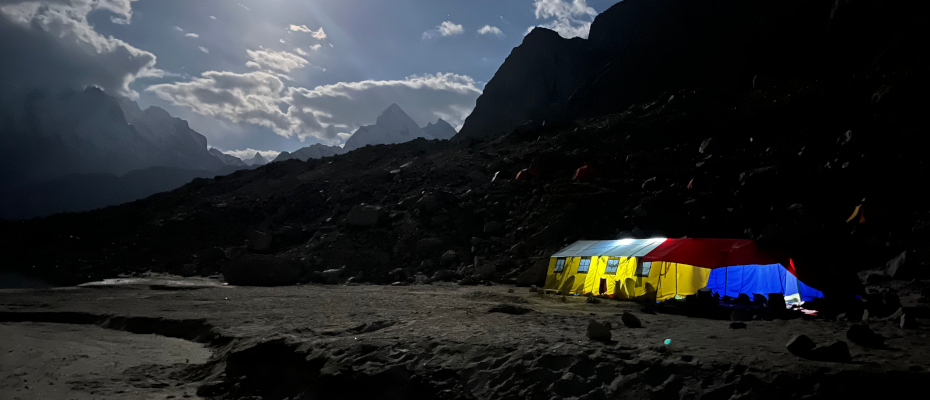
Level 3 is level 2 in the mountains, so everything we need for level 2 is basic, but then we have other specifics.
- Usually we have to logistically transport the equipment far and high up in the mountains, which takes more time and especially energy.
- Higher altitude brings lower temperatures and that means more clothing, a warmer sleeping bag and also climbing in cold to wintry conditions, which is challenging especially for the hands. Furthermore, often the ascent and descent, or even part of the wall, go over a glacier, and this in turn means that we will encounter snow, firn and ice. So in addition to rock climbing equipment, we will need ice axes, crampons and ice srews.
- The presence of snow at least has the advantage that we don’t need to carry water, it's all around us. On the other hand, melting snow into water takes time, is technically more demanding in the wall, and requires an adequate amount of fuel. All of this means that, even though climbers are usually aware of the issue, they often end up insufficiently hydrated, which then negatively affects their performance.
- Climbing shoes continue to change, both in size and often in type. The size increases and they become ankle-high. And they are worn with socks. Yes, you heard right, socks into climbing shoes, and often thick ones. I understand that for indoor climbing specialists it's like a hat on the driver's head, but the experience is non-transferable. Ankle climbing shoes are then, from the indoor perspective, something like plaid retiree slippers (I didn't have to think of the simile for long), but the mountains are often granite, so "crack rules". This makes ankle-high climbing shoes a "must have" in some routes.
Level 4 – Big wall at higher altitudes
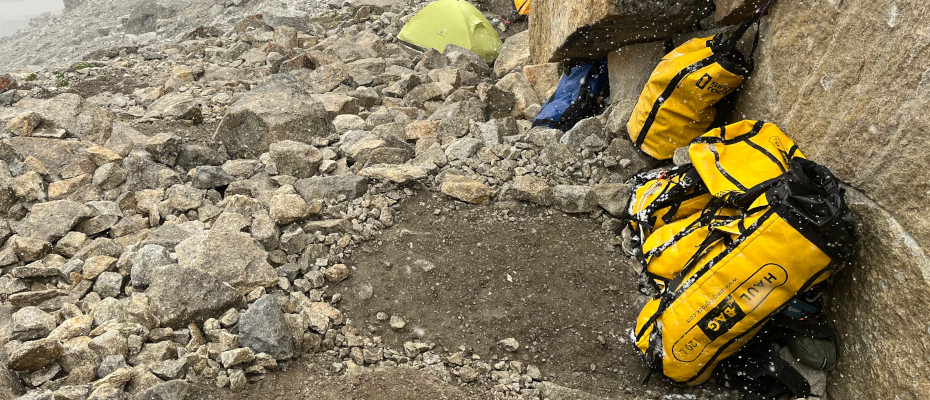
In level 4 we get even higher into the clouds, or rather above them, which presents even more challenges.
- The high altitude requires thorough acclimatization, which cannot be achieved just by marching to the base camp and under the wall. Sufficient extra time is necessary. Some people try to speed up the acclimatization with medication, but this can work maybe just in alpine conditions. Either way, it's a strain on the body.
- The higher the altitude, the smaller the number of people able to function in such conditions at 100%. But even an acclimatised climber does not recover sufficiently at higher altitudes.
- Of course, the amount of stuff for mountain big wall adventures continues to increase, not only due to the demands of the wall. We have to have extra reserves, both with regard to the changing weather, but also with regard to the limited rescue possibilities (although the possibility of rescue has already improved considerably in the Himalayas or Karakoram, for example).
Level 5 – Big wall in extreme conditions in remote destinations with no possibility of rescue

This last level includes, for example, climbing on Baffin Island or other places outside civilization. If you're going there, we probably don't need to go into that. If you have such an intention, you certainly have enough experience with big walls and you are reading the article "What to pack for your first big wall" more out of boredom or by mistake.
Berg heil!
Lumír Fajkoš
passionate climber and Singing Rock sales rep
(Where to next? Check out the big wall equipment overview.)






